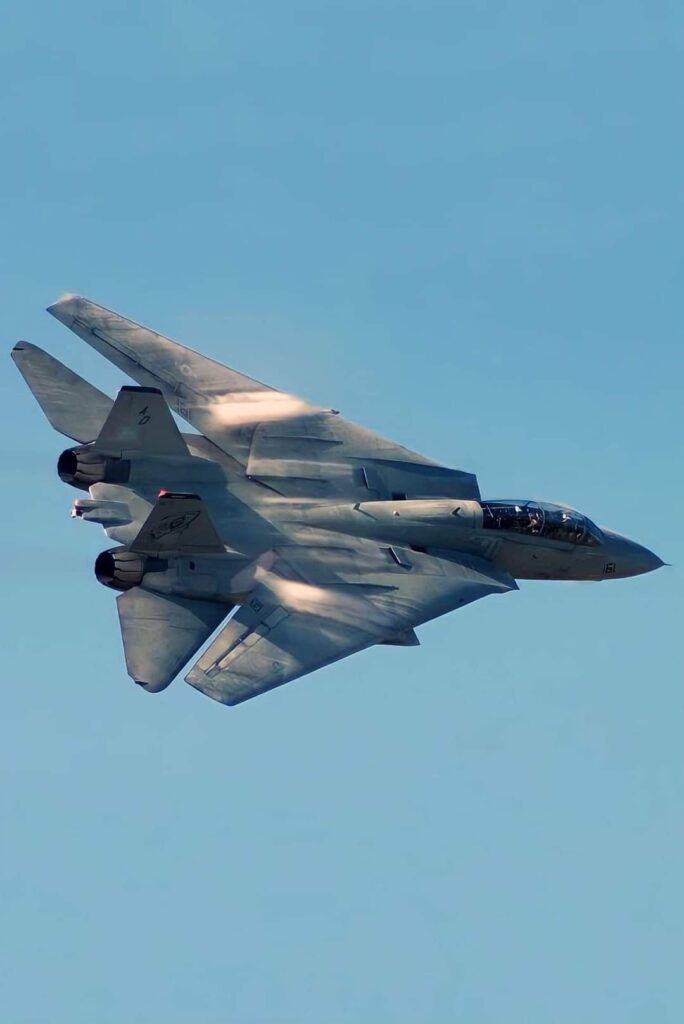
The F-14 Tomcat was not simply another aircraft in the long history of naval aviation; it was a symbol of dominance, protection, and power projection during the Cold War and beyond. Designed at a time when threats to aircraft carriers were growing more sophisticated, the Tomcat became the shield of the fleet, standing guard against enemy bombers, cruise missiles, and hostile fighters. With its sleek, aggressive profile and unmistakable twin tails, the Tomcat was both a guardian and a sword, built to face any storm that approached the American carrier strike group.
When the F-14 first entered service in the early 1970s, the United States Navy faced a daunting challenge. The Soviet Union had invested heavily in long-range bombers armed with anti-ship missiles capable of striking carriers from hundreds of miles away. To counter this, the Navy needed a fast, long-ranged interceptor that could meet threats far from the carrier and neutralize them before they could launch their deadly payloads. The Tomcat answered this call. Its variable-sweep wings gave it unmatched flexibility, allowing it to fly supersonic in a dash or loiter efficiently during long patrols. Its powerful Pratt & Whitney engines gave it the speed and climb rate to meet intruders head-on.
The true heart of the Tomcat’s defensive power, however, was its weapon system. The AWG-9 radar, revolutionary for its time, could track multiple targets at ranges well beyond 100 miles. Coupled with the AIM-54 Phoenix missile—a weapon capable of striking targets over 90 nautical miles away—the F-14 could engage enemy aircraft before they ever saw the fleet. A formation of Tomcats flying combat air patrols formed a protective shield around the carrier, pushing the Navy’s defensive perimeter outward and buying precious reaction time. To the sailors working below decks, the Tomcat’s roar on the catapult was reassurance that the fleet was never defenseless.

Beyond its interceptor role, the Tomcat grew into a versatile multirole fighter. By the 1990s, it was carrying precision-guided bombs, reconnaissance pods, and air-to-air missiles, proving its adaptability in conflicts from the Gulf War to the skies over the Balkans. Still, even in these later missions, the legend of the Tomcat as the carrier’s shield remained strong. Its imposing silhouette on the flight deck reminded friend and foe alike that the U.S. Navy had teeth.
The Tomcat also became an icon in popular culture, most famously immortalized in the film Top Gun. To the public, it was a symbol of speed, daring, and American airpower. To the Navy, it was something more: a trusted guardian. For over three decades, it faced down Soviet bombers, patrolled hostile waters, and defended strike groups in moments of uncertainty.
Though retired in 2006, the Tomcat’s legacy endures. Its successors, such as the F/A-18E/F Super Hornet and the F-35C Lightning II, carry on the mission, but none inspire quite the same awe. The F-14 was built for a unique moment in history, forged in the crucible of Cold War tension, and remembered as the ultimate shield of the carrier. It was designed to face the storm—and it did so with unmatched courage and power.



